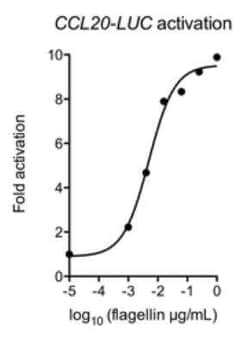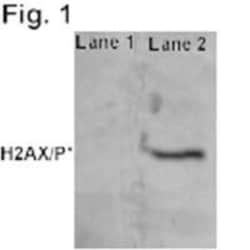
Bio Techne
Bio-Techne es un desarrollador, fabricante y proveedor mundial de reactivos, instrumentos analíticos y diagnósticos de precisión de alta calidad. Tanto si se encuentra en la vanguardia de la investigación académica, traduciendo descubrimientos básicos en pistas terapéuticas, o en una instalación que requiere el más alto nivel de pruebas de diagnóstico, nuestras galardonadas herramientas y soluciones permiten a los científicos y médicos lograr resultados reproducibles y consistentes. Elegir Bio-Techne significa tener la confianza de que cada solución que utilice le ayudará a avanzar hacia mejores respuestas.
- Acerca de Bio Techne
- Anuncio
- Todos los productos
- Ofertas especiales
Categorías principales
Recursos relacionados

Una nota de aplicación que demuestra el valor de las proteínas de R&D Systems™ para lograr condiciones de cultivo de organoides robustas y reproducibles.
- Filename
- 23227_bio_techne_optimizing_organoids_Fisherised_v2.pdf
- Size
- 1 MB
- Format
- application/pdf

Desarrolle su potencial proteínico y celular
- Filename
- 23227_bio_techne_realize_protein_Fisherised.pdf
- Size
- 3 MB
- Format
- application/pdf

Progresos, retos y un futuro apasionante
- Filename
- 23227_bio_techne_organ_on_a_chip_technology_progress_Fisherised.pdf
- Size
- 326 KB
- Format
- application/pdf
Fisher Scientific Europe anuncia un nuevo acuerdo de distribución con Bio-Techne en Europa
París, Francia 01-05-2024
Thermo Fisher Scientific, proveedor líder de productos y servicios de laboratorio, se complace en anunciar un hito importante en su compromiso de ofrecer soluciones de vanguardia a sus clientes. A partir del 1 de mayo de 2024, Thermo Fisher firmará un acuerdo estratégico de distribución en Europa con Bio-Techne (NASDAQ: TECH), una compañía global de ciencias de la vida que proporciona herramientas innovadoras y reactivos bioactivos para las comunidades de investigación y diagnóstico clínico.
Esta asociación marca una importante colaboración entre dos líderes de la industria en los campos de la investigación científica, el diagnóstico y la biotecnología. En virtud de este acuerdo, Thermo Fisher, a través del canal Fisher Scientific, Europa, distribuirá la amplia cartera de productos innovadores de Bio-Techne, que incluye anticuerpos, proteínas, kits de inmunoensayo, reactivos y enzimas a laboratorios e instituciones de investigación de toda Europa.
"We are thrilled to forge this partnership with Bio-Techne, a company renowned for its pioneering advancements in the life sciences industry," said Claire Wallace, President, Fisher Scientific channel, Europe. "By adding Bio-Techne's high-quality products to our comprehensive portfolio, we aim to further empower scientists and researchers with the tools they need to drive breakthrough discoveries and advancements in healthcare."
Bio-Techne's state-of-the-art products are designed to accelerate research and improve outcomes in areas including cell and gene therapy, immunology, neuroscience, and more. With this collaboration, Thermo Fisher reinforces its commitment to providing customers with access to the latest technologies and expertise, ultimately advancing scientific knowledge and improving human health.
«Estamos muy contentos de asociarnos con Thermo Fisher para ampliar el alcance de nuestros productos y servicios en toda Europa», dijo Kim Kelderman, Presidente y Director Ejecutivo de Bio-Techne. «Al aprovechar la amplia red de distribución europea y la experiencia en el sector del canal Fisher Scientific, pretendemos mejorar el apoyo a los investigadores y acelerar los descubrimientos científicos que abordan algunos de los retos más acuciantes de la atención sanitaria actual.»
Este acuerdo de distribución subraya la dedicación de Thermo Fisher a fomentar la innovación y la colaboración dentro de la comunidad científica. A través de asociaciones estratégicas con empresas líderes como Bio-Techne, Thermo Fisher continúa reforzando su posición como socio de confianza para investigadores y laboratorios de toda Europa.
Acerca de Bio-Techne
Bio-Techne Corporation (NASDAQ: TECH) es una empresa global de ciencias de la vida que proporciona herramientas innovadoras y reactivos bioactivos para las comunidades de investigación y diagnóstico clínico. Los productos de Bio-Techne contribuyen a la investigación científica de los procesos biológicos y de la naturaleza y evolución de determinadas enfermedades. Ayudan a descubrir fármacos y proporcionan los medios para realizar pruebas y diagnósticos clínicos precisos. Con miles de productos en su cartera, Bio-Techne generó más de 1.100 millones de dólares en ventas netas en el año fiscal 2023 y cuenta con aproximadamente 3.100 empleados en todo el mundo.
¿Preguntas? Póngase en contacto con un especialista >






-ELISA-NBP3-11804-img0001.jpg-250.jpg)












